Case Study Analysis: Investigation of Responsible Management in the BP Oil Disaster
Executive Summary
This report analyzes the failure of BP Oil in the context of responsible management. This miss-management is the result of careless measures as well as inappropriate administration especially in the perspective of risk management.
BP Oil disaster shows the example of careless attitude of petroleum industry which directly and indirectly hugely impacts the human, other living beings, surrounding atmosphere and nature. It shows the unethical practices of the firm as well as not giving concern towards CSR practices due to which consistently hazards have taken place on the living being as well as ecosystem.
The management of the firm ignored the government regulations and CSR concerns while conducting its operations. It has ignored the safety norms and regulations that resulted in the oil disaster. It is also failed to comply with warning signals provided by the government leading to the oil disaster.
The irresponsible practices of the firm of BP Oil has created the situation of huge disaster due to which Gulf of Mexico surrounding environment as well as water life has get impacted. This impact was not small as after the five years of this disaster Gulf of Mexico wild life was facing issues..
Furthermore, it offers feasible recommendations and key guidelines to manage the organizational issues in an adequate manner. For this, the firm can execute the management policies regarding CSR framework and evaluate the supply chain to prevent the environmental issues. In addition, the firm should take corrective actions on time to show its responsible behavior towards handling of environmental issues.
Increase level of industrialization has a significant impact on the environment. In this context, in the year 2010, deepwater Horizon oil spill took place, which is referred by BP oil spill. This disaster has killed eleven people and is considered as the largest marine oil spill in the history of petroleum industry.
From the estimation of the U.S. government, the total discharge was around 4.9 million barrels. There were various steps taken to stop the leakage but all the efforts were failed so, the well was declared to be sealed in September, 2010. However according to the reports of early 2012, the well site was still leaking.
This report is based on case study analysis that is based on the investigation of responsible management in the BP Oil Disaster. This report has given special consideration towards discussing the disasters which takes place due to petroleum industry.
Furthermore, it discusses about the Corporate Social Responsibility (CSR) which petroleum industry have to follow while making recommendations to eliminate these kind of situation in the future (Drescher, et al., 2014). This report has analyzed the drawbacks which have taken place due to carelessness which has lead towards this disaster.
This report has analyzed the self-regulation of responsible management, and the amount of risk on people’s health and eco-system which can be handled on the basis of ethical and sustainable practices (Shultz, et al., 2015).
The following case, discusses about the absence of responsible management lead towards the failure on sustainable goals and supports to offer the measures which can be utilized to prevent such events.
The psychopathic conduct of the industry leads towards the guilt due to disregarding the human rights while risking the environment. It also creates the situation of threat to the existence of sustainable society (Carrington, 2016). So, it is essential to understand the responsibility of the corporation towards the society in the context of goodwill, while abiding by the standard laws and defining the sustainability of a business to make it successful in the industry.
2. Corporate norms for Oil industry
The corporate norms provide the environmental standards and involvement of the public relations of the oil industry.
In order to maintain environmental standards, the industry provided the different guidelines for the oil industry. The guideline provides the safety of the environment and eliminates the impact of business operations on the health of the living things (Kleinnijenhuis et al., 2015).
The environmental impact assessment (EIA) is a tool that is helpful to take the decisions in the preliminary stage of the business development. The main propose of EIA is to discover the different impact of the developed plan for the industry.
EIA develop the policy to solve the problems related with the environment and also helps the project to diminish the risk. On the other hand, a perfect design for the environment is also developed for the oil industry by use of the different methods of evaluation. There are three methods of evaluation according to the environmental aspect such as qualitative, quantitative and semi-qualitative method (Sanderson, 2016).
All the methods related with designed tools for providing the integration to the industry. The corporate norms are also helpful to prevent the pollution by providing different rules and regulations for saving the environment by the industrial projects.
It is because this industry is directly or indirectly increases the pollution in the environment which can only reduced by using the techniques. The oil disaster can highly influence on the health of each living things which can be restrict by adapting the techniques which are ethical (Swain & Jordan, 2015). At the same time, the purpose of the project should be restricting the unethical techniques that are already using in the oil production.
The oil industry has many products that provide the energy to the human beings for their vehicle and transportations. But it also impacts on the environment because it contains the main reason of the pollution (Wickman, 2014).
The oil industry impacts on the public at the global level by increasing the pollution. The local population and people nearby the industrial sites are highly affected because the wastage oil of the industry is reaches in the ponds and rivers. For this, the standards are developed that the industry will not spread the water in the river and ponds to save the people from water pollutions. The oil industry should also contain the code of conducts for the safety of the people and employees of the industry.
In this, different regulations for employees are provided like fire proof cloths, safety gears, alarm at danger, medical help, etc (Yin, et al., 2015). Moreover, the company should provide proper training, information, proper workspace and clean environment for the safety.
3. BP Oil Disaster: Critical Analysis
Why did it happen?British petroleum is the British multinational oil and gas corporation. It’s headquarter is situated in London and this corporation has high demand in the global market (Starbird, et al., 2015). However, in the year 2010, this corporation has shown a big carelessness in the context of oil spill in Gulf Mexico. In the year March 2005, explosion at BP’s Texas City has taken place. This explosion has taken place due to hydrocarbon liquid and vapour release from the “blowdown stack” and it got ignited.
In the year 2006, there were two leaks have taken place at Prudhoe Bay oilfield in Alaska in the month of March and August (The Telegraph, 2017). It was the largest oil spill which has ever taken place in Prudhoe Bay. In March, the leak has spilled more than 200,000 gallons of crude oil. In like manner, in the month of August the smaller leak has taken place but it has forced BP to shut down the production in the eastern side.
In 2009, Pipeline of BP has started to leak oily material onto the tundra and 30,000 barrel per day had leaked in Lisburne field, Alaska which was adjacent to the Prudhoe Bay field. This incident has happened due to crack in a flow line(The Telegraph, 2017).This crack has spilled approx 46,000 gallons mixture of oil and water on the surface of snowy tundra.
Moreover, in the year 2010, explosion has taken place in the aboard deepwater horizon and has killed 11 rig workers (The Telegraph, 2017).This was the one of the worst offshore oil spill in the history. In this oil spill, 4.9m barrels oil has released into the Gulf of Mexico. In the year 2011, pipeline of BP has leaked oily material onto the tundra at Lisburne field.
In defence BP said that the pipeline was broke during the testing. Due to which, spill has taken place and the mixture of methanol and oily water has spilled onto the tundra. This spill has released 2,100 to 4,200 gallons of oil mixture, which has wet and aquatic tundra(The Telegraph, 2017).
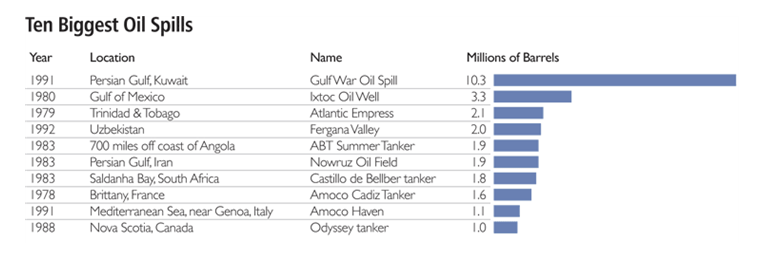
Ten Biggest Oil Spoils
(Source: The Heritage Foundation, 2010)What were the consequences?
This incident has adversely impacted the business of BP and created negative customer base of the firm.
This incident has given huge impacts towards the surrounding environment and water life. Not only this, but also 11 people were died in this incident. Further, various corrective actions taken by BP to control the leakage of oil in the water but all the campaigns taken by the corporation were failed (Muskal, 2012).
It has adversely impacted the market reputation of the firm. This incidence has killed 15 workers at the refinery (The Telegraph, 2017). Moreover, 180 workers were injured in this incident. In the context of the incidence, which has taken place in 2010, in Gulf of Mexico, it has hugely hindered the water life also.
This oil spill has become the major issue as it is something which is near to impossible to clean the oil into the Gulf. It has adversely affected the business and the image of the firm on the basis of unethical practices (Barrage, et al., 2014).
After the oil spill, BP has spent $90m in three months, which has supported to make effective public relation but still not become able to make good relationship. BP has spent $13bn (£7.9bn) plus amount for the purpose of cleaning the oil but still it is a challenge for the organization. Moreover, it is also analysed that BP is committed to fund $500m for the purpose of scientific studies to get the understanding regarding the impact of the spill. Additionally, firm has invested approx $280m in the context of wildlife rescue.
How effective was this response?
From the history of BP, it is analysed that the incident which was taken place in 2010 was due to corporate irresponsibility and government negligence. BP is showing the trend of various disasters which has taken place in different countries. This corporation also accepts their mistake and pay the huge amount of compensation to the government but still it does not shown the improvement in the attitude of negligence. According to the views of Rouge (2014), due to the reckless conduct of BP, deepwater horizon oil spill has taken place which directly reflects that the firm has shown less concern towards the fulfilment of government regulations and CSR.
For this disaster in the Texas City 2005, BP has admitted that the firm has ignored the safety procedures and due to which it has given the compensation of over $2bn (£1.26bn) for the purpose of settling down the legal claims from the explosion. At the same time, this firm has given $71.6m due to the violation of worker safety and $100m as a pollution fines(BP, 2017).
In the context of Prudhoe Bay field incident (2006), according to the US government, this corporation failed to pay attention to the warning signs which are given by the government and due to this reason, BP has to pay $12m as a criminal fine, $4m as a criminal restitution to Alaska and $4m as a community service payments (Ocean Portal Spill, 2017).
For the incident of oil spill in Gulf of Mexico 2010, BP has agreed to the US government to pay $7.8bn for the settlement of this claim(The Telegraph, 2017). However, it is identified that although this incident was taken place seven years ago but still there is an impact of disaster. Due to which, under the government regulations, still BP is paying the civil and criminal penalties.
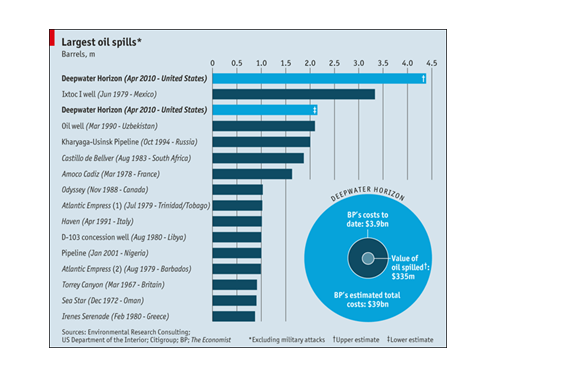
Largest Oil Spills
(Source: Miller, 2010)
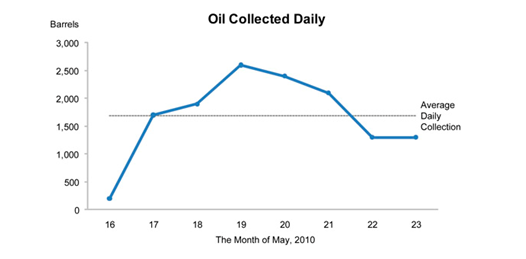
Graph of Oil Collected Daily, 2010
(Source: Maddow, 2017)
From the above graph, it can be understood that initially the oil explosion was increasing on the continuous basis, then decrease in the explosion has taken place and after that stability can be seen (Maddow, 2017).
Due to this, corporate irresponsibility, life on the earth has got hugely impacted. So, there are lots of people who have shown protest against this spill.
There are different groups which have protested against this organization due to negative impact on the atmosphere, life, and environment and surrounding (Barrage, et al., 2014). This incident has created major issue towards the brand image of the firm which has also adversely affected the public relation of the firm.
Different authors such as Black Tide, Antonia Juhasz, etc. have also written about the boon of this spill and there are various debates have taken place regarding how such a large corporation can do such a silly mistake (Ocean Portal Spill, 2017).From this, it can be analyzed that this firm has created adverse market image of the firm while creating the image of distrust in the mind of the consumers.
In this case, it is analyzed that the firm has shown the attitude of irresponsibility, due to this reason, these incidents have taken place. The incidents which have taken place in the BP was not a single incident but this firm has shown regular issues which has damaged the environment while creating negative impact towards the human life as well as surrounding atmosphere.
According to the CSR theory, it is essential for the firm to give concern towards the welfare of society, people as well as the surroundings (Arora, & Lodhia, 2017). However failure in the responsible management results negative impact on all these parameters.
At the same time, according to triple bottom line theory, it is essential for the firm to give concern towards people, planet and profit. In this context, due to ineffective management system, this firm not become able to fulfill these criteria and has hugely impacted the water life (Cherry, 2015).
From the above case, it is clear that BP has failed to act on the recommendations several times and not become able to handle the issues on a continuous basis. In this context, the Prof Robert Bea, who is the safety expert at the University of Berkeley, produced the report for BP after the explosions at Grangemouth facility 1987-2001 thatthese failures of BP could create serious issue on the safety of the refinery operations.
However, BP does not become serious on this perspective due to which continuous issues over the environment and people has seen (Peres, et al., 2016).4. Conclusion and Recommendations
From the above report, it can be concluded that although industrialization is supporting to make the human life easy but if it is not managed in an adequate manner then it can become boon for the people as well as for the society.
In the current scenario, due to increase in the level of competition, firms are only giving concern towards making their business to stay a step ahead in the industry and in this competition they become less concern about their responsiveness.
However, it is analyzed that giving concern towards ethical practices as well as CSR allows the firm to create long-term sustainability in the industry while developing the trust in the mind of the consumers.
From this report, it is found that British Petroleum has shown irresponsive attitude on a regular basis due to which the firm has also paid huge amount of compensation as well as it has adversely impacted the public relation of the firm. Due to this reason, the last decade remained for British Petroleum.
For the oil spill disaster firm needs to give concern towards implementing the management policies of the firm while giving concern towards effective CSR strategies as it will help the company to regulate the issues which are taking place on a regular basis.
There is a need of developing the effective process of time to time checking the supply system so that the issue which has taken place in the past will not take place in the future context. At the same time, firm needs to initiate to support the some social works for the welfare of the people as well as society.
These activities of BP will also assist to resolve the issues related to public relation. Firm needs to utilize the theory of triple bottom line within the firm in a strict basis so that the issues which are taking place on a regular basis can be controlled.
BP needs to take strict action to eliminate the chances of any kind of disaster in the future context. Moreover, this corporation needs to work towards taking corrective actions for the incidents which has taken place due to its irresponsive attitude and still impacting the human life.
Arora, M. P., & Lodhia, S. (2017). The BP Gulf of Mexico oil spill: Exploring the link between social and environmental disclosures and reputation risk management. Journal of Cleaner Production, 140, 1287-1297.
Barrage, L., Chyn, E., & Hastings, J. (2014). Advertising, reputation, and environmental stewardship: Evidence from the BP oil spill. Ann Arbor, 1001, 48109-1220.
BP (2017). BP Global. [Online] available at: https://www.bp.com/ (Accessed at: 15 December, 2017).
Carrington, D. (2016). Leaked BP report reveals serious near-miss accidents. [Online] available at: https://www.theguardian.com/environment/2016/dec/13/bp-near-misses-reveal-lack-safety-monitoring-refinery-oil-sites (Accessed at: 15 December, 2017).
Cherry, K. E. (2015). Disasters and Long-Term Recovery: Introduction to a Special Issue. Current Psychology, 34(3), 492-493.
Drescher, C. F., Schulenberg, S. E., & Smith, C. V. (2014). The Deepwater Horizon Oil Spill and the Mississippi Gulf Coast: Mental health in the context of a technological disaster. American Journal of Orthopsychiatry, 84(2), 142.
Kleinnijenhuis, J., Schultz, F., Utz, S., & Oegema, D. (2015). The mediating role of the news in the BP oil spill crisis 2010: How US news is influenced by public relations and in turn influences public awareness, foreign news, and the share price. Communication Research, 42(3), 408-428.
Maddow, R. (2017). BP Oil Collection – Is the Effort Really Improving?[Online] available at: https://www.perceptualedge.com/blog/?p=790 (Accessed at: 15 December, 2017).
Miller, J. (2010). BP Anniversary: Wednesday July 28 BP Oil Spill. [Online] available at: http://pbrla.blogspot.in/2010/07/bp-anniversary-wednesday-july-28-bp-oil.html (Accessed at: 15 December, 2017).
Muskal, M. (2012). BP guilty of criminal misconduct, negligence in gulf oil spill. [Online] available at: http://articles.latimes.com/2012/nov/15/nation/la-na-nn-bp-criminal-penalty-gulf-oil-spill-20121115 (Accessed at: 15 December, 2017).
Ocean Portal Spill (2017). Gulf Oil Spill. [Online] available at: http://ocean.si.edu/gulf-oil-spill (Accessed at: 15 December, 2017).
Peres, L. C., Trapido, E., Rung, A. L., Harrington, D. J., Oral, E., Fang, Z., … & Peters, E. S. (2016). The deepwater Horizon Oil spill and physical health among adult women in Southern Louisiana: The women and their children’s health (WaTCH) study. Environmental health perspectives, 124(8), 1208.
Rouge, B. (2014). BP’s reckless conduct caused Deepwater Horizon oil spill, judge rules. [Online] available at: https://www.theguardian.com/environment/2014/sep/04/bp-reckless-conduct-oil-spill-judge-rules (Accessed at: 15 December, 2017).
Sanderson, J., Barnes, K., Williamson, C., & Kian, E. T. (2016). ‘How could anyone have predicted that# AskJameis would go horribly wrong?’public relations, social media, and hashtag hijacking. Public Relations Review, 42(1), 31-37.
Shultz, J. M., Walsh, L., Garfin, D. R., Wilson, F. E., & Neria, Y. (2015). The 2010 Deepwater Horizon oil spill: The trauma signature of an ecological disaster. The journal of behavioral health services & research, 42(1), 58-76.
Starbird, K., Dailey, D., Walker, A. H., Leschine, T. M., Pavia, R., & Bostrom, A. (2015). Social media, public participation, and the 2010 BP deepwater horizon oil spill. Human and Ecological Risk Assessment: An International Journal, 21(3), 605-630.
Swain, K. A., & Jordan, L. A. (2015). BP’s Reputation Repair Strategies during the Gulf Oil Spill. Journal of Risk Analysis and Crisis Response, 5(1), 2-15.
The Heritage Foundation (2010). Stopping the Slick, Saving the Environment: A Framework for Response, Recovery, and Resiliency. [Online] available at: http://www.heritage.org/environment/report/stopping-the-slick-saving-the-environment-framework-response-recovery-and (Accessed at: 15 December, 2017).
The Telegraph (2017). A history of BP’s US disasters. [Online] available at: http://www.telegraph.co.uk/finance/newsbysector/energy/oilandgas/9680589/A-history-of-BPs-US-disasters.html (Accessed at: 15 December, 2017).
Wickman, C. (2014). Rhetorical framing in corporate press releases: the case of British petroleum and the gulf oil spill. Environmental Communication, 8(1), 3-20.
Yin, J., Feng, J., & Wang, Y. (2015). Social media and multinational corporations’ corporate social responsibility in China: The case of ConocoPhillips oil spill incident. IEEE Transactions on Professional Communication, 58(2), 135-153.

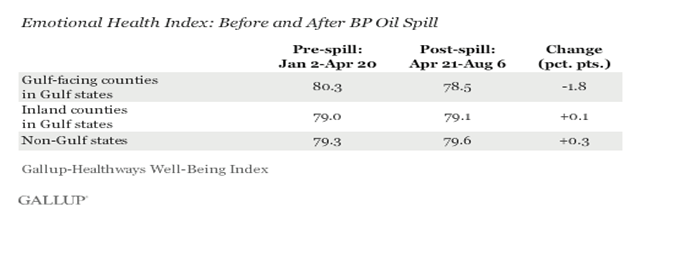

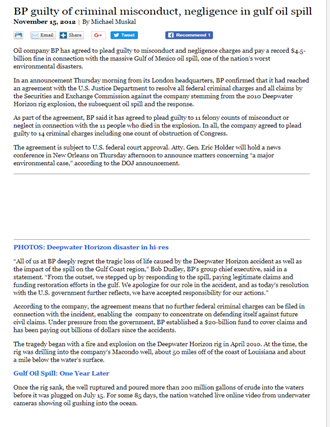

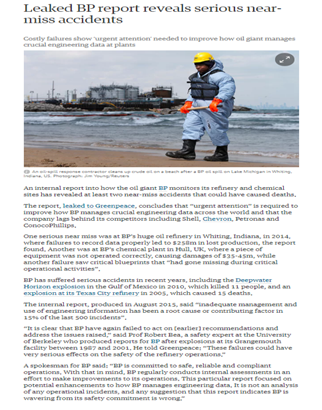
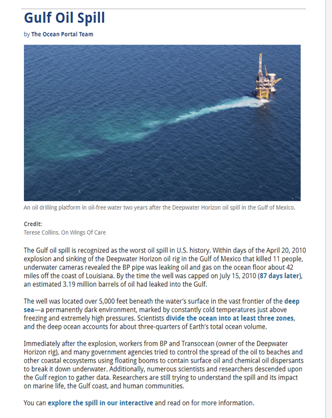
From the findings of BP’s US disasters of The Telegraph, it is analyzed that BP disaster has taken place due to irresponsible management which has directly impacted the environment, people and water life. In like manner, it is analyzed that due to this irresponsive nature and governance negligence, firm has to pay the penalties (The Telegraph, 2017).
At the same time, BP’s reckless conduct caused Deepwater Horizon oil spill, judge rules has supported to analyze that the instances of negligence taken place by BP reflects that this firm shows extreme deviation from the set standard regarding CSR and ethical practices. It shows conscious disregard of the firm to the known risks (Rouge, 2014).
In like manner, from the findings of BP guilty of criminal misconduct, negligence in gulf oil spill, it is analyzed that BP has acknowledgement about the misinterpretation and has released its internal investigation report which reflects that as a resolution with the U.S. government, in the context of criminal claims, BP agreed to pay the penalty for the five years as the oil spill in the Gulf of Mexico has created worst environmental disaster (Muskal, 2012).
Furthermore, Leaked BP report reveals serious near-miss accidents has supported to analyze that BP was well aware about the risks which can be taken place but it has shown less interest towards taking corrective action due to which continuous incidents have taken place (Carrington, 2016).
Gulf Oil Spill has supported to evaluate that to clean the sea water physical methods and dispersant methods are majorly used. Additionally, it has supported to analyze that the corrective actions should be taken in a timely manner as it directly impacts the water life (Ocean Portal Spill, 2017).


